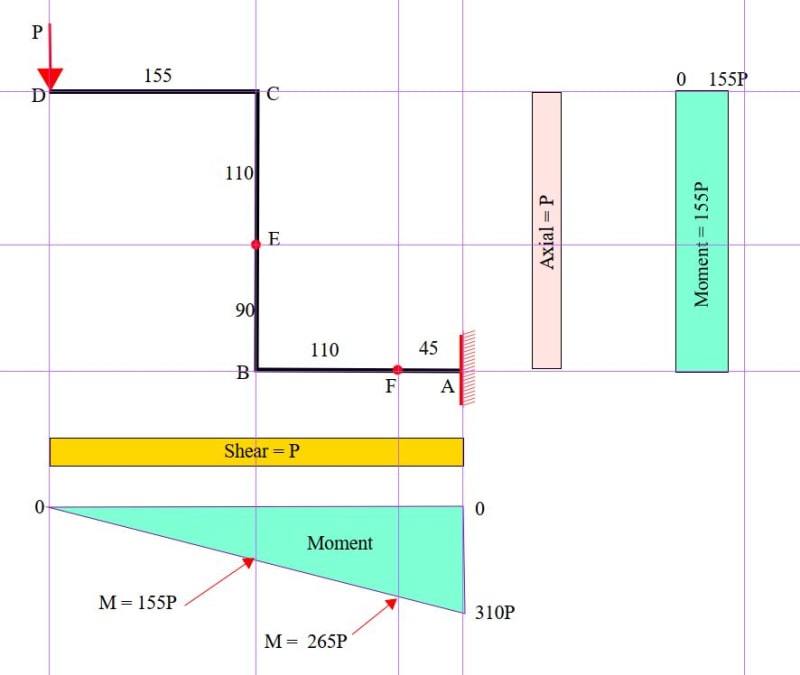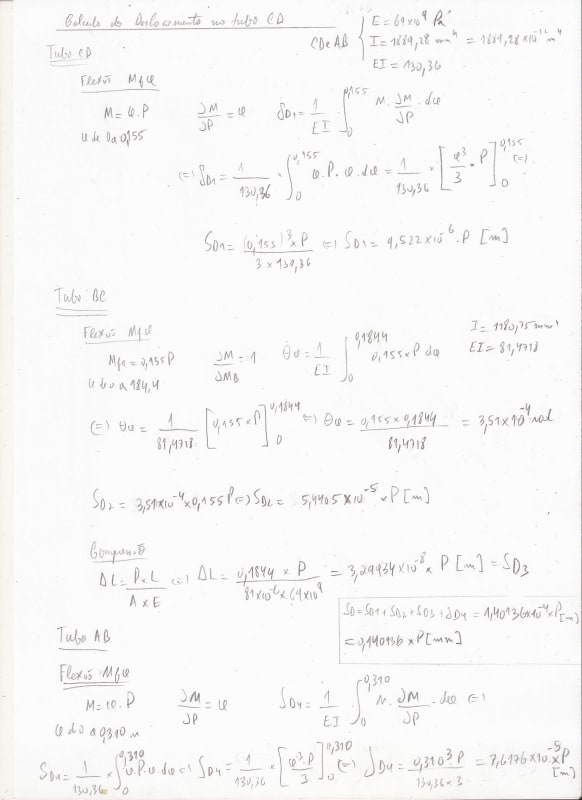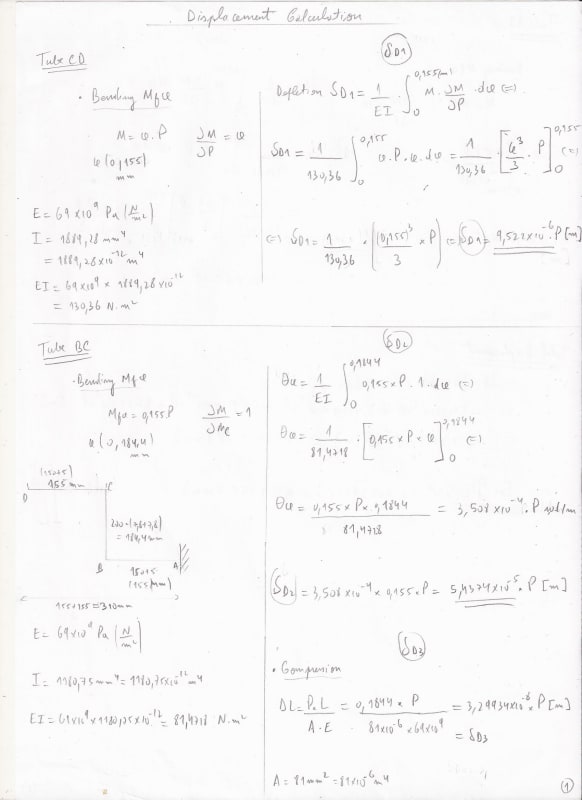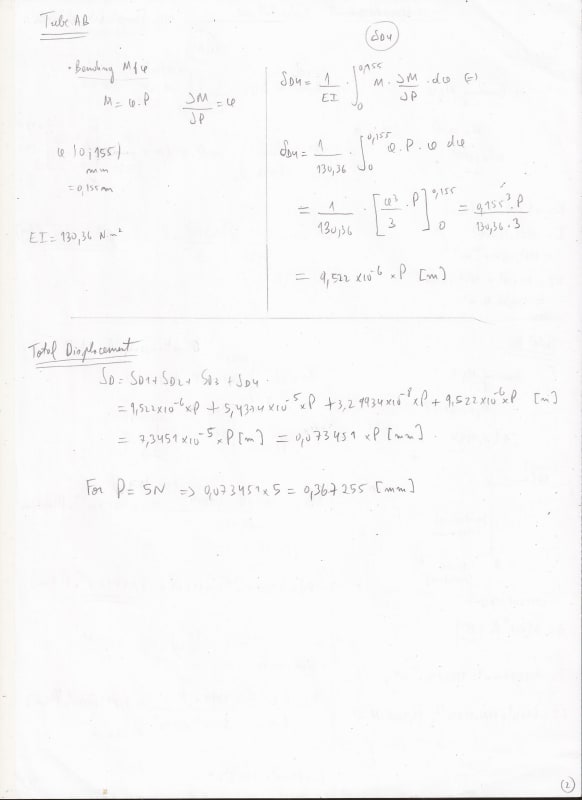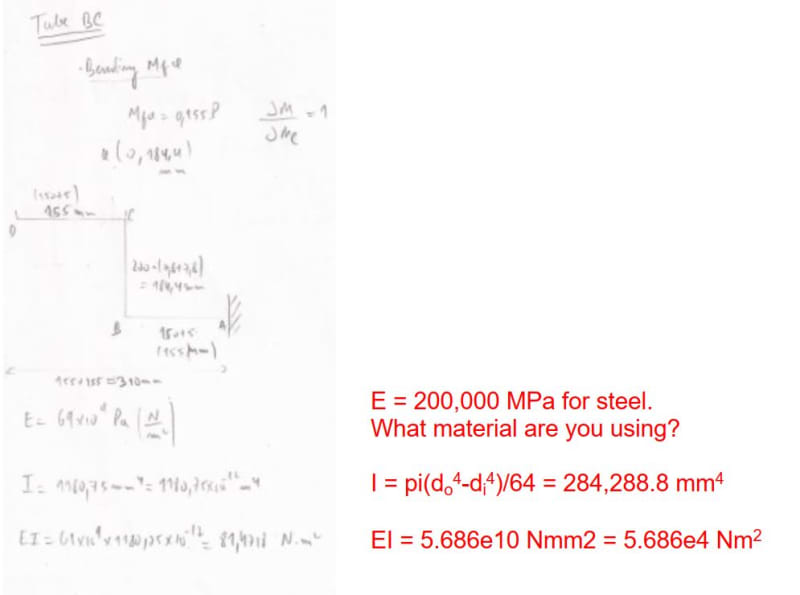ok. rb1957 you say that at the rosette section, transverse stress is zero, then shear stress is zero because is hollow the vertical (retangular) tube ?
in mohr circle for rosette , then i consider tau_xy=zero right?
But in the horizontal circular tube i where i have the linear gauge section, i calculated shear stress using Tau_xy=(VQ)/(It), it's correct?
By the way, in the experimental test, on the rosette, I obtained values for the deformation for each gauge, Ea, Eb Ec and I am calculating
shear stress Tau=G x Angle_xy where the Angle_xy=Ec-Ea using that Ex1=Ex*cos(teta)^2+Ey*sen(teta)^2 +angle_xy*sen(teta)*cos(teta)
for teta=zero then Eb=Ex for teta 45 e -45 e get to Ec and Ea equations, then i get to Angle_xy= Ec- Ea
with this expression i obtained experimentaly, not analytical, this values.
Load [N] angle_xy shear stress [MPa] normal stress [MPa]
5 -3,2832E-06 -0,083931429 -3,5051076
7 -3,02488E-06 -0,077327759 -4,70843832
which makes me confusion when youre saying that shear stress (analytical calculation) at rosette is zero. Because i have to compare analytical with experimental values.
by the way could you explain me, why the experimental (not analytical), are the values negative for each gauge on the rossete? it was espected obtain this values, for each gauge? do you know the reason ?
Rosette:
Load [N] gauge a [µs] gauge b [µs] gauge c [µs]
5 -14,34284 -51,5457 -17,62604
7 -20,91824 -69,24174 -23,94312
In the linear gauge, i think they are negative because of compression load right?
Load[N] linear gauge [µs] Comparator clock [mm]
5 -0,800698 1,491
7 -6,929114 1,9308
9 -12,7958 2,762
the first value could be error its very diferent from others, wich could be the cause of this -0,800698 ?
Thanks

